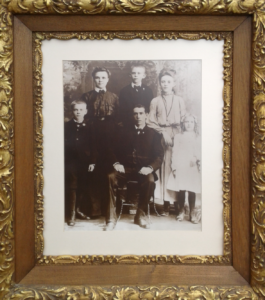
As those from the Depression and World War II eras die, their children are left to resolve a tragic problem that past generations did not face.
The problem involves stuff nobody wants. The possessions of parents are no longer prized by many children. The family silver means little to them. Even sentimental reasons are not enough to save family heirlooms from the thrift shop or consignment store. Sometimes, children will unload entire households upon services that specialize in liquidating such goods.
It is not only the fact that people cannot absorb extra things into their overcrowded homes, but the very things themselves no longer have a purpose in the home of later generations. Hectic lifestyles make mobility of cheap furnishings more important than the stability of heavy furniture.
Tastes Have Changed

Indeed, tastes have changed, and those things of the past are no longer valued. It was once thought the mere fact that something was considered an antique would guarantee that it would have at least some value. That is no longer true.
There is no market for the “antiques” of the Greatest Generation. Many antique dealers will not touch the items. The market is flooded with such objects. Even thrift shops and charities can afford to be picky about what they will receive.
What Does Saint Thomas Say About Immigration?
Of course, it should be noted that much of the stuff nobody wants is itself not of high intrinsic value. A lot of it was mass-produced, which has never tended to hold value. Generally, it is only the things of highest quality that still find markets. Anything else, even if tasteful and beautiful, is stuff nobody wants.
It’s Not the Stuff
While the lack of a market is a difficulty, the real problem is not the stuff itself. It is the desire to leave it behind. The new generations have adopted a mentality that breaks with the past. They are more likely to favor IKEA furniture over traditional sideboards and mahogany tables.
Things like formal china patterns often mean nothing to many of these generations. The lack of formality in their lives has not only made traditional designs and styles irrelevant but it calls into question the use of china, silver, crystal and fine linens themselves.
In an increasingly mobile and virtual world, things do not have the same meaning they once had. Whereas memories used to be tied to physical realities, postmodern generations are increasingly capturing their special moments online.
Changing technology makes all tech-related objects obsolete. The hectic pace of life weakens the attachment to things. A sprawling family in which members live far from parents also makes it physically difficult to move goods to their homes.
What does Saint Thomas Aquinas say about Marriage?
The Disappearing Family

One of the primary reasons why there is so much stuff nobody wants is the decline of the family. When the institution that should transmit spiritual values fails to do so, it should be no surprise that it would fail to pass on the material objects that are tied to them. Objects no longer have stories attached to them; they have no value tied to memories.
The U.S. Department of Census reports that 43 percent of all American children live without their father. The broken marriages of parents break the lines of transmission for this stuff nobody wants. The broken marriages of children likewise make family goods less desirable. When children do not marry or live together, the belongings of the parents that fit into a family context find no purpose in households.
Where there is no sense of permanence or stability in relationships, things lose their significance, and there is no place for the stuff nobody wants.
A Wrong Notion of the Family
However, the decline of the family is not the only reason nobody wants these belongings. This stuff is often left to children and grandchildren who have healthy families of their own. They maintain close relationships with their parents or grandparents. However, they have their own responsibilities and regret the fact that the objects left to them do not fit into their lives.
Such is the tragedy of the modern nuclear family. This notion of the family helps explain why there is so much stuff nobody wants. Just as most individuals see themselves as unlinked to others, so also most families today see themselves as a social unit without connection to others—even their own.
Thus, the modern nuclear family does not see itself as a continuation of a family tradition. Its members do not see the need to maintain an old home or property that should be kept “in the family.”
To them, the family is just the sum of living members composed of a father, mother, and children. Once one reaches adulthood, the individual becomes an autonomous being with few binding obligations and no need for the old stuff of their parents.
This is so contrary to the traditional notion of the family. Throughout history, the family has always been understood to mean the unbroken unity of the whole lineage of ancestors and descendants.
[like url=https://www.facebook.com/ReturnToOrder.org]
Families used to consider it a point of duty to maintain their honor, traditions and property. It was only with the Enlightenment that this universally held belief was called into question. Families then became isolated social units instead of transmitters of spiritual values and material goods.
Preserving the Continuity of the Family
That is why in pre-modern times, children conformed their lives to that of the family. Inside the family, they found protection and identity. Individuals enriched the family with their own contributions while drawing from the family’s rich heritage.
That is also why families at all income levels took measures to ensure continuity that spanned the centuries. Family members became trustees who shared not only a common blood of heredity but a common spiritual and material inheritance that each generation held as a sacred trust to be safeguarded and increased.
Indeed, because they wanted these higher things, they avoided the present postmodern dilemma of finding themselves with stuff nobody wants.
As seen on crisismagazine.com


